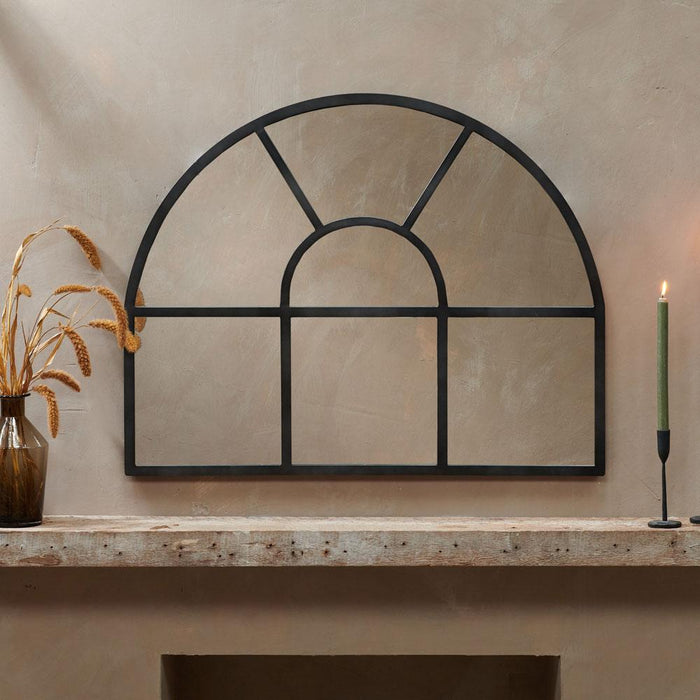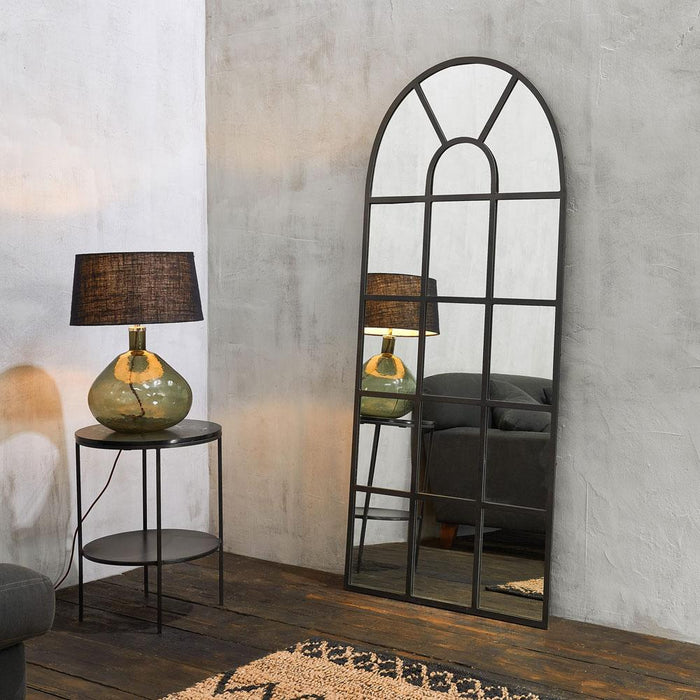Oriental Mirror
In the realm of interior design, few items captivate the imagination quite like the oriental mirror. These mirrors, with their intricate designs and rich histories, are more than mere reflective surfaces; they are storytellers, narrating tales of ancient civilisations, artistry, and cultural significance. As the world becomes increasingly globalised, the allure of the East has found its way into homes across the UK, seamlessly blending the traditional with the contemporary. Shimu, a leading name in Chinese antique and oriental furniture, has been instrumental in this cultural exchange, offering a bridge between the past and the present. Through our curated collection, we invite you to explore the world of oriental mirrors, to appreciate their beauty, and to delve deeper into the stories they tell.
The History and Craftsmanship of Antique Oriental Mirrors

The story of the oriental mirror is as ancient as the civilisations from which they originate. Rooted in the rich tapestry of Asian cultures, these mirrors have evolved over millennia, reflecting not just faces, but the art, beliefs, and aspirations of entire societies.
In ancient times, mirrors in the East were not just utilitarian objects. They were considered symbols of truth and introspection, often associated with spiritual and philosophical teachings. Crafted with precision and care, the designs on these mirrors often incorporated elements from nature, mythology, and daily life, each motif carrying its own unique significance.
The craftsmanship behind antique oriental mirrors is a testament to the skills and dedication of artisans from bygone eras. Unlike the mass-produced items of today, each antique mirror was painstakingly crafted, often involving several artisans specialising in different aspects of its creation. From the smelting of bronze or silver for the reflective surface to the intricate carvings on the frame, every step was a labour of love and expertise.
But what truly sets oriental mirrors apart is their ability to capture the essence of the periods they hail from. An antique oriental mirror from the Ming dynasty, for instance, might showcase the minimalist elegance that was characteristic of that era, while one from the opulent Qing dynasty could be a riot of colours and intricate motifs.
Today, as we admire these mirrors, we're not just looking at beautiful objects. We're connecting with history, with artists who lived centuries ago, and with a cultural legacy that continues to inspire and influence design trends around the world.

Oriental Wall Mirrors: More Than Just Reflections
Oriental wall mirrors are a testament to the multifaceted role mirrors play in interior decor and design. Far from being mere functional items, these mirrors are transformative elements that can redefine spaces, create visual interest, and tell stories of distant lands and ancient traditions. In traditional oriental settings, wall mirrors were often placed strategically to not only offer reflections but to enhance the flow of energy, or 'chi', within a room. Their placements were thought to bring balance, harmony, and positive energy to living spaces. This philosophy, deeply rooted in Feng Shui, underscores the profound cultural significance of mirrors in the East.
Beyond their spiritual and philosophical roles, oriental wall mirrors are also celebrated for their aesthetic appeal. Their frames, often adorned with intricate carvings, paintings, or inlays, are artworks in their own right. Whether depicting serene landscapes, mythical creatures, or scenes from daily life, these designs offer glimpses into the rich tapestry of oriental cultures.
In modern homes, an oriental wall mirror can serve as a statement piece, drawing the eye and sparking conversations. Its presence can add depth to a room, making it appear larger and more open. Moreover, the mirror's design can introduce a touch of oriental charm, bridging the gap between contemporary aesthetics and age-old traditions.
In essence, oriental wall mirrors are more than just decorative items; they are symbols of a design philosophy that values harmony, beauty, and cultural storytelling. Through them, we can experience the magic of the East, right in the heart of our homes.

The Charm of the Oriental Round Mirror
The circle, with its unbroken, continuous form, has always held a special place in oriental symbolism. Representing unity, wholeness, and eternity, it's no wonder that the round mirror has become a cherished item in oriental decor. The oriental round mirror, with its perfect symmetry, captures the essence of this symbolism, offering both aesthetic beauty and deeper cultural significance.
Historically, round mirrors were often associated with spiritual and cosmic concepts in many Asian cultures. They were seen as representations of the heavens, the cycles of life, and the interconnectedness of all things. This reverence for the circle can be seen in various aspects of oriental culture, from art and architecture to spiritual practices.
In terms of design, the oriental round mirror often features intricate patterns and motifs on its frame. These can range from delicate floral designs, representing nature's bounty, to dragons and phoenixes, symbolising power and renewal. The craftsmanship behind these mirrors is a testament to the skills and artistry of the artisans, who often drew inspiration from nature, mythology, and the world around them.

In contemporary interiors, the oriental round mirror stands out as a versatile piece. Whether placed in a minimalist setting or a room bursting with colours and patterns, it effortlessly becomes a focal point, drawing attention and admiration. Its timeless design ensures that it complements various decor styles, from the traditional to the avant-garde.
Incorporating an oriental round mirror into one's home is not just about adding a decorative element; it's about embracing a piece of art that carries with it centuries of history, culture, and symbolism. It serves as a reminder of the timeless beauty and wisdom of the East, inviting us to reflect, both literally and metaphorically.
Large Oriental Mirrors: Making a Statement
Large oriental mirrors are more than just functional items; they're statement pieces that command attention. With their grandeur and intricate designs, they evoke the opulence of ancient Chinese palaces and mansions. These mirrors, often adorned with elaborate carvings and motifs, not only reflect their surroundings but also the rich cultural heritage of the East. Perfect for spacious rooms, they add depth, create focal points, and infuse spaces with a touch of oriental charm. As such, a large oriental mirror is both an artwork and a testament to timeless craftsmanship.
Shimu's Collection and A Comparative Look at Oriental Mirrors
Shimu, with its unwavering commitment to authenticity and quality, offers a diverse collection of oriental mirrors. Each piece, whether an antique or a modern interpretation, reflects a unique aspect of oriental design and craftsmanship. Choosing from Shimu's collection is not just about acquiring a decorative item; it's about embracing a piece that carries with it the rich tapestry of oriental artistry, history, and culture.
Tips for Incorporating Oriental Mirrors in Your Home
Incorporating oriental mirrors into modern homes can transform spaces, infusing them with depth, character, and a touch of the exotic. Here are some key tips to consider:
- Room Aesthetic: Match the mirror with the room's decor. An ornate antique mirror can stand out in a minimalist setting, while a simpler design might complement a room bursting with patterns.
- Placement: Use principles from Feng Shui. Positioning a mirror opposite a window can amplify space and bring in natural beauty.
- Care and Maintenance: Oriental mirrors are not just decorative; they carry history.
- Clean them gently to maintain lustre.
- Keep them away from direct sunlight to ensure longevity.
Remember, while these mirrors are undoubtedly beautiful, they also serve as links to ancient traditions and cultures. Choose and care for them with the reverence they deserve.
The Legacy of Oriental Mirrors
The world of oriental mirrors offers a captivating blend of art, history, and cultural storytelling. Each mirror, with its intricate designs and motifs, serves as a window into the rich history of Asian civilisations. As we incorporate these treasures into our modern homes, we're not just enhancing our spaces; we're also connecting with ancient traditions and philosophies. Shimu, with our curated collection, has played a pivotal role in this cultural exchange, allowing us to experience the magic of the East right in our living rooms. As we admire these mirrors, we're invited to reflect on the timeless values and artistry they embody. In a rapidly changing world, oriental mirrors stand as a testament to the enduring allure of the East, reminding us of the beauty of bridging past and present, tradition and modernity.
Nkuku Throws | Chinese Wood Panel | Chinese Wardrobes | Chinese Wardrobe Cabinet | Chinese Wall Art | Oriental Trunk | Oriental Stoneware | Chinese Storage Chests | Chinese Antique Dealers London | Stone Tang Horses | Wooden Buddha Statues | Apothecary Cabinet | Camphor Wood ChestsChinese Tea Table | Antiques from China | Chinese Ceramics | Chinese Boxes




